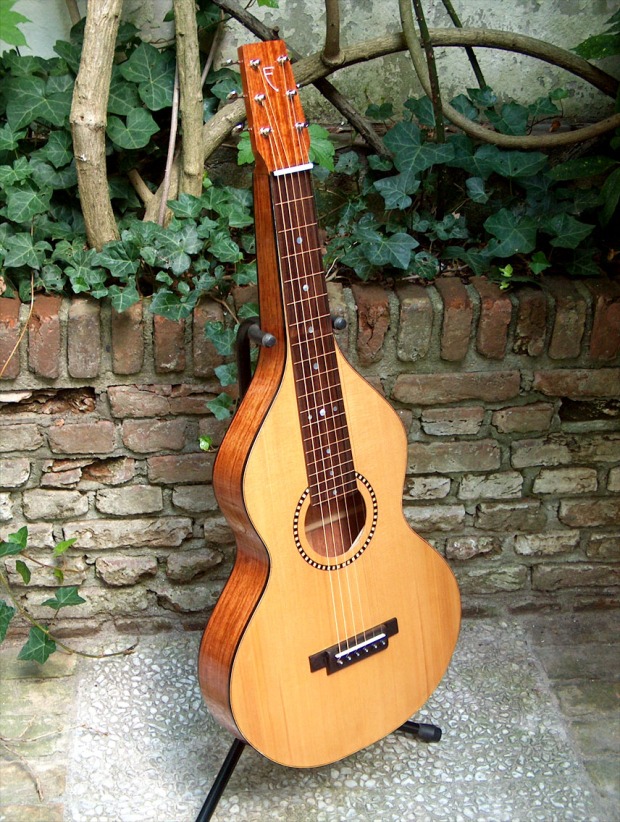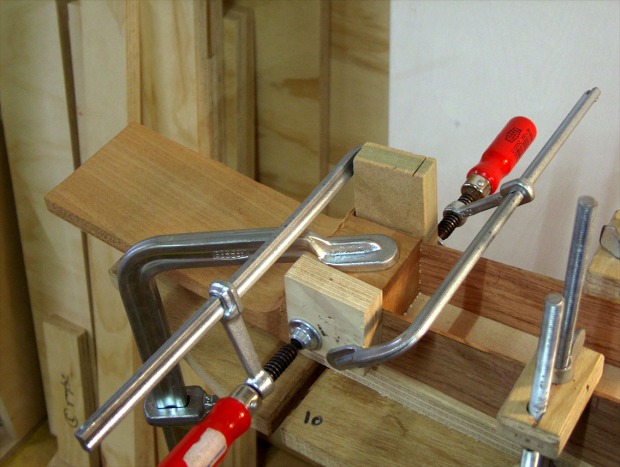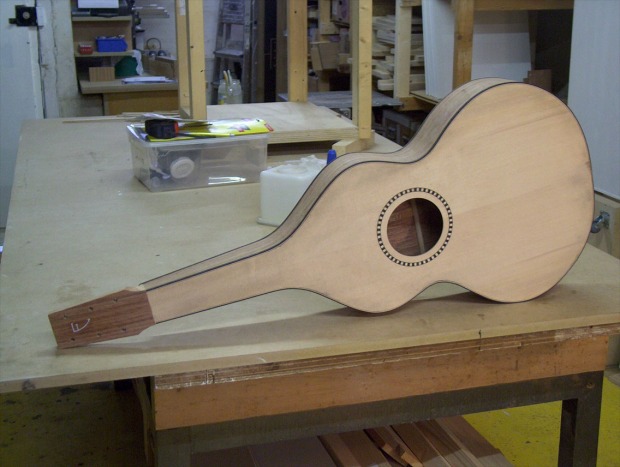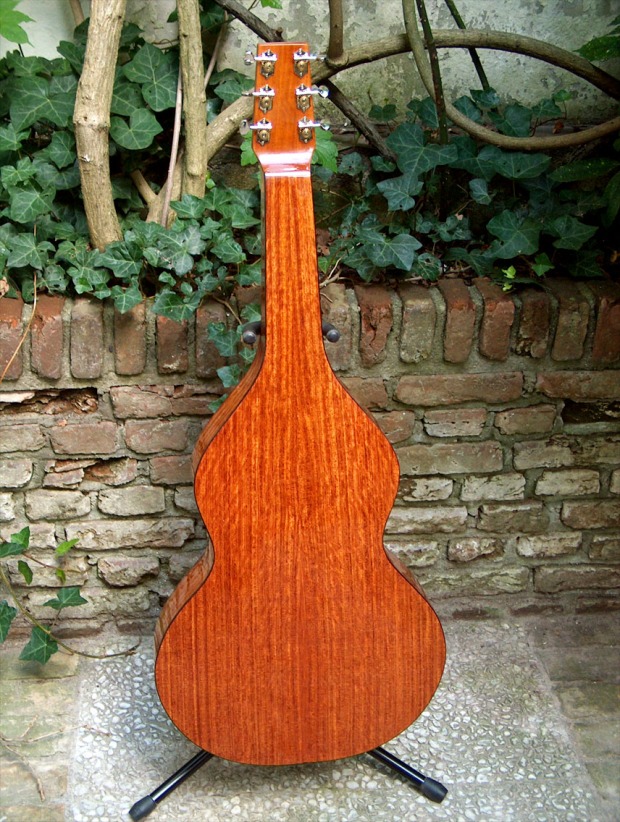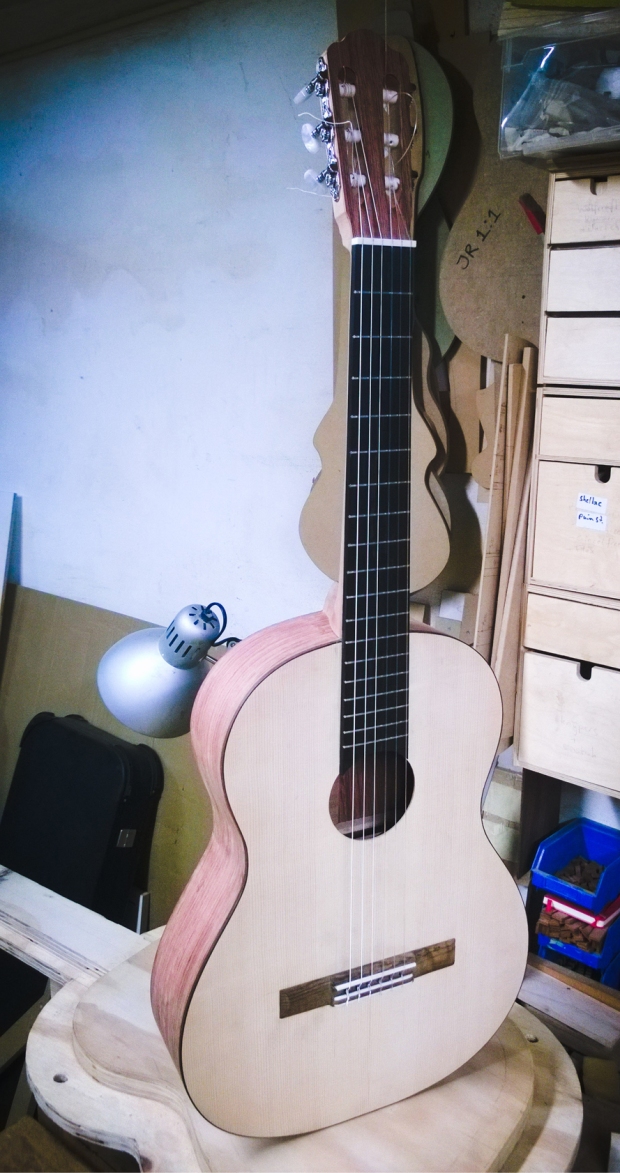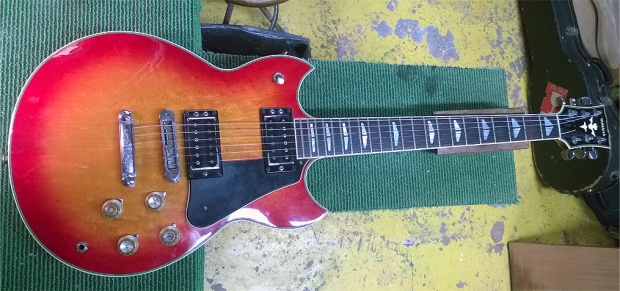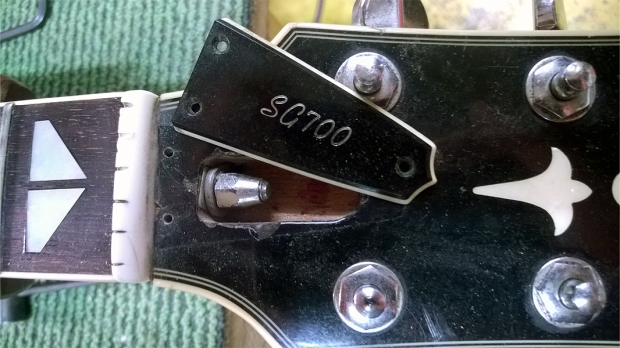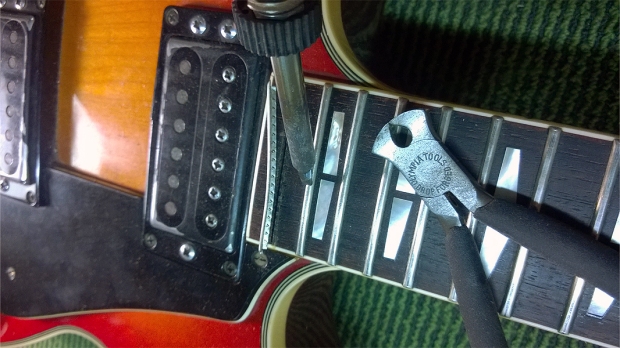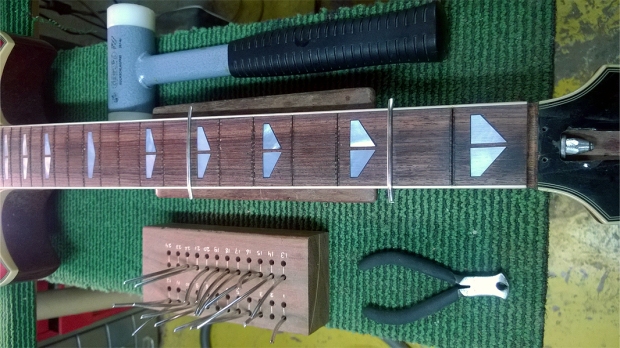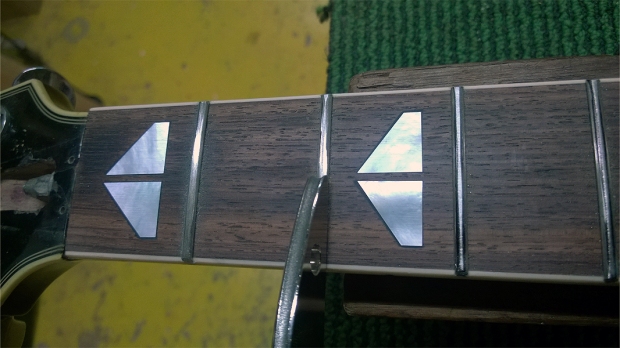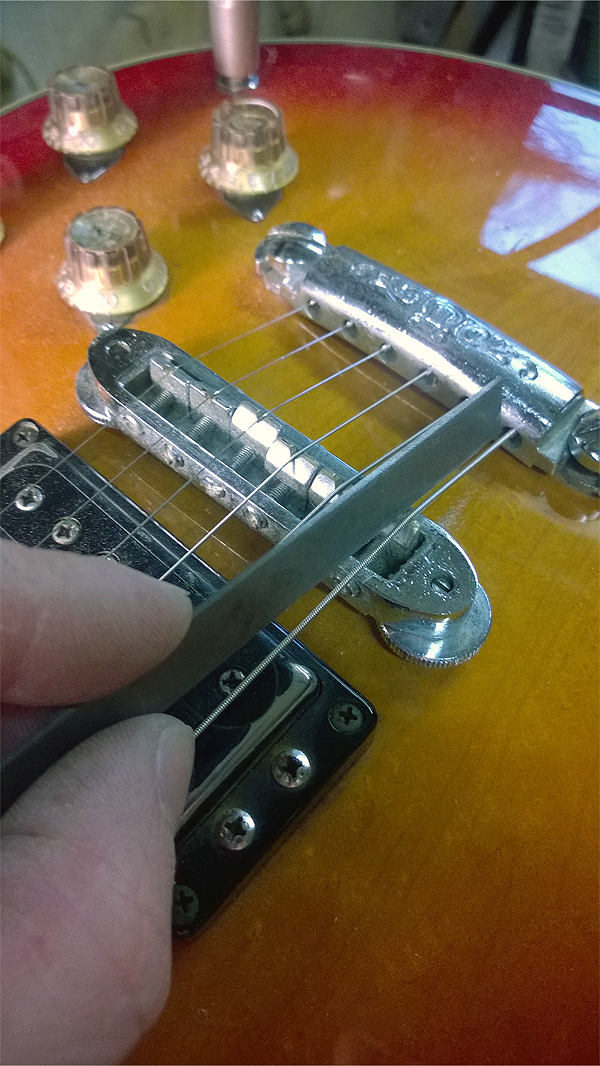Recently I did a refret on an Ibanez RG550 electric guitar. Not a regular refret as the owner had some requests:
- make the fretboard flat, no radius, like a classical guitar
- replace the locknut by a Graphtech Black Tusq XL nut to match the flat fretboard
- use stainless steel fretwire
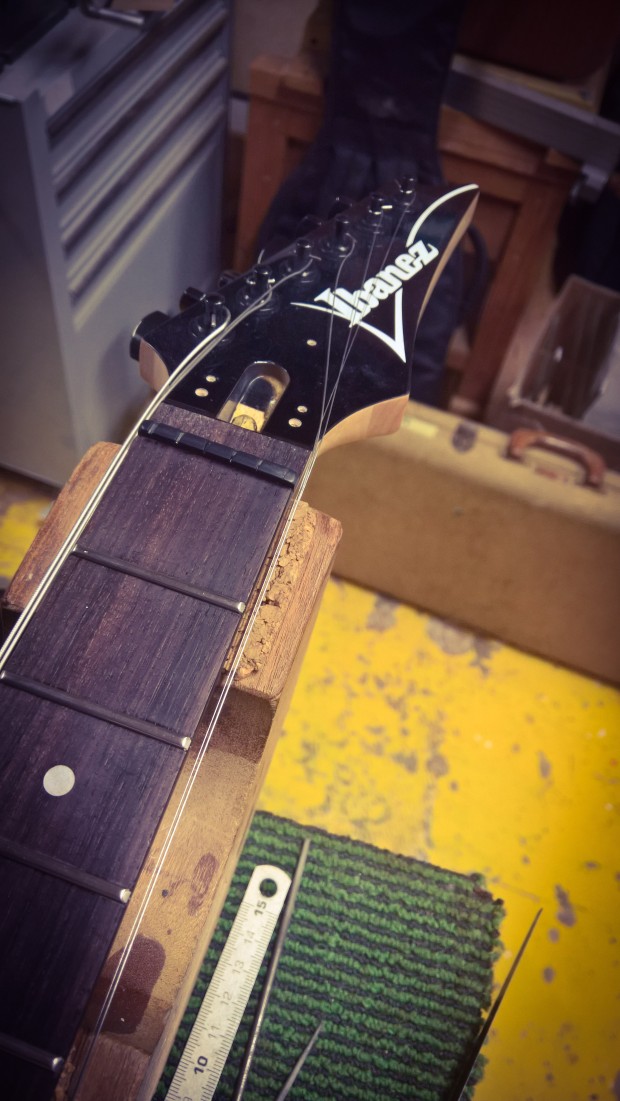
Stainless steel fretwire, wasn’t that the material that kills your tools? Hmmm… let’s just do it. I ordered a bit of Jescar FW58118 3mm wide super jumbo fretwire, the biggest fret you can get. I also ordered a Summit fret “tang” nipper just in case. I anyway wanted to replace the old StewMac nipper that started to make funny squeaking sounds – a sign it will break soon as experience learns at unwanted past moments.

The leveling of the fretboard was straight forward, the original Ibanez radius was somewhere around 16″.
I refret any guitar with the “tang” of the fret (the part that sticks in the wood) cut back a bit. Most fretboard shrink a little at dry periods during the year (special winter when you heath up the house) as a result you will feel the fret ends. It is much easier to sand back only the top parts of the fret if the “tang” is still inside the wood. At least that is my way of doing.
Cutting the “tang” with the Summit nipper is a relief compared to the StewMac gizmo. It is expensive but very easy to get used to. It has a depth stop for repeating work. Of course a few test cuts are needed to get to know the tool. It cuts the “tang” very smooth, and the fret does not need to be worked on after. The stainless steel frets are cut well, just make sure the wire is set wel in the tool before cutting. Once you know it it’s easy.
Even on a flat fretboard I am used to hammer the fret in with a little overbend. My thought was the role I got was a good overbend. It was not. Compared to regular Dunlop nickel-silver fret wire the Jescar stainless steel behave almost like spring steel. I had to make the fret wire more straight.

I used a little modification on the StewMac fret bender. I placed a washer under the two smaller bearings, to be able to feed the fretwire mirrored in the bender. A rather straight fret was coming out, wich could be bend slightly in radius the normal way. That worked great.
To cut the fret ends after fretting the guitar neck, I used my old fret end nipper. I think the nipper is retired and I have to place another order at Summit in Slovenia.
Leveling the frets obviously costed many sandpaper. To crown the frets I used another StewMac tool I really like, their offset diamond fret crowning files. Just the end of the file gets slowly stuck in my hand as I work on a fretboard, this time I made a maple cap to support my hand. The cap is just clamp fit on the tool and can be removed.

The result of the refret, although a lot of hard work, was worth it. Bends are super smooth to play and the hard frets seem to give the guitar a quicker response. The guitar was by request setup with flatwound strings, the instrument still had enough bite and attack with the warmth of the flat strings.

